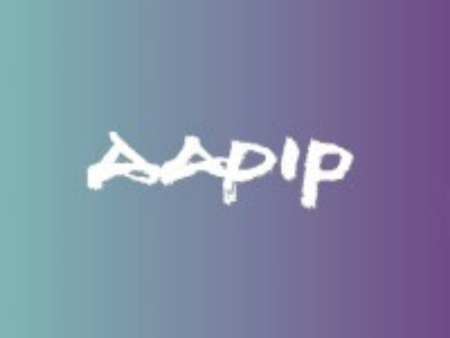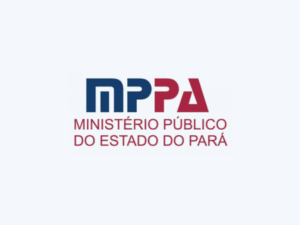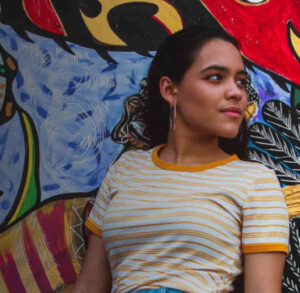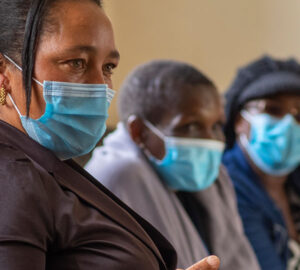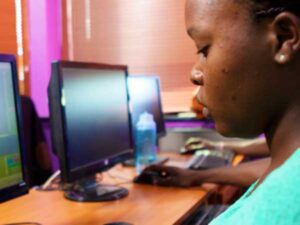Asian Americans / Pacific Islanders in Philanthropy is a justice-minded national philanthropy serving organization that provides unique community spaces for Asian Americans, Native Hawaiians, Pacific Islanders, and allies in philanthropy.
Lyle Matthew Kan of Asian Americans/Pacific Islanders in Philanthropy spoke with Ashley Hopkinson on January 18, 2024. Click here to read the full conversation with insights highlighted.
Ashley Hopkinson: Can you start off by introducing yourself and talk about the issue that the organization was created to serve, and how you work to serve that?
Lyle Matthew Kan: Hi, my name’s Lyle Matthew Kan. I use he/him/his pronouns, and I’m currently the interim president and CEO of AAPIP, Asian Americans/Pacific Islanders in Philanthropy.
I think we have a really inspiring origin story that parallels, in many ways, the creation of many identity-based philanthropy serving organizations — what we used to call affinity groups.
We were founded in 1990 at a Council on Foundations (CoF) conference. CoF has historically — and some would argue still is — been a small ‘c’ conservative space. I don’t necessarily mean politically, but a very traditional philanthropy space.
We follow a similar trajectory as the Association of Black Foundation Executives (ABFE) that was founded about fifty years ago after a move to ensure that persons of color were represented on the CoF board.
In 1990, a group of Asian people & a group of Native American people working in philanthropy found each other at this conference and realized that their numbers could not fill a single table in the ballroom of the conferences. That became the birth of our organizations: Asian American/Pacific Islanders in Philanthropy (AAPIP) and Native Americans in Philanthropy (NAP).
When we talk about the problem that we’re looking to solve, one was about representation in the sector. When you’re not represented in a sector, they’re often not equipped to support you. They don’t have the cultural competence to adequately support your leadership & make sure that you rise up the ranks.
First and foremost, that’s what many race-based & identity-based organizations are founded to do: create communities of care for our people — to provide professional development opportunities & track how the sector was hiring folks. This was reflected in a report ABFE published called “The Exit Interview” that tracked why people of color were not staying in philanthropy.
Related to that is the dearth of funding that has historically been allotted to our communities. We’re currently updating the research, but our most recent findings showed that Asian communities in the United States received less than $200 million a year of the more than $100 billion grants awarded in the United States each year.
Our challenge was to educate foundations in becoming more culturally competent to support our communities; philanthropic advocacy was necessary to increase the philanthropic resources for Asian American, Native Hawaiian, and Pacific Islander communities.
I’m not sure it’s always necessarily right. There’s been some thought over the years that if you increase representation in foundations — on boards, on staff, on senior leadership — you would see an increase in funding. That doesn’t always happen; sometimes, it’s about having people in those roles with the right political education & understanding of how to increase funding.
So, our thinking has evolved: it’s great to have an Asian person — any person of color — in those senior roles, but they also need to come with an understanding of the historical disparities that our communities have faced & the resources to connect those disparities to current solutions.
Ashley Hopkinson: How do people find your organization? How do they know you’re there and you’re able to support them? How do you plug into the community?
Lyle Matthew Kan: I started my career in LGBTQ philanthropy and worked at Funders for LGBTQ Issues for eight years. This was around 2010; it was only fourteen years ago, but it was a very different landscape for LGBTQ people in this country: don’t ask, don’t tell was still in the space; there was no marriage equality. We were trying to reach LGBTQ people that worked in the sector to expand our base, [but it was almost impossible to reach the community at that time].
There are more sophisticated ways to do that nowadays. One of those ways that AAPIP & a lot of similar groups does this is by creating opportunities to invite people into the fold. For example, going to these large, mainstream conferences — Council of Foundations, Grantmakers for Effective Organizations, or some of the larger regional associations like Philanthropy New York, Philanthropy Southeast, Philanthropy Northeast — and just setting up a happy hour.
At AAPIP, we are unique among the race-based identity groups in that we have a local chapter structure. So, we have twelve chapters across the United States: Los Angeles, San Francisco, Silicon Valley, Seattle, Twin Cities, Chicago, Denver, Rocky Mountains, New York, Washington DC, Philadelphia, and Boston.
There are Asians everywhere, but in some places, there might not be the time or energy or enough people in philanthropy to start a chapter. But the chapters are critical.
With the violence happening against Asian women, I often think about all of our communities; we want to serve people wherever they are, no matter where they live. Even if you’re the only Asian person in your rural town, we want you to have someone supporting & advocating for you because that can be extremely isolating. I don’t want to forget those folks.
Ashley Hopkinson: What would you say makes the approach of the organization distinctive?
Lyle Matthew Kan: I think that it’s distinct that we are creating community care spaces and advocating for greater philanthropic resources for Asian communities. So yeah, we’re unique in that sense, but there’s a lot of great organizations that do that work for other communities & for other issue areas.
I like to think that we’re part of an ecosystem of organizations that do that & that we can really learn from each other to figure out what works, what doesn’t work.
We work very closely; we’re constantly sharing what’s working, what’s not working. Having worked in philanthropy serving organizations for as long as I have, there is certainly room for creativity and for experimentation; but there’s a certain tried and true toolkit that you can rely on to support people in our sector and to move resources.
Ashley Hopkinson: Can you share an example that illustrates the impact of this work?
Lyle Matthew Kan: We have an initiative called Power and Practice that brings together Asian CEOs and Asian trustees of large foundations. When I meet with all of these Asian CEOs, what I find most inspiring is that almost all of them talk about the home that AAPIP made for them in the ways they were involved in the chapters.
Peggy Saika, who is a legendary former President and CEO of AAPIP, reached out when I started in philanthropy. The whole network was welcoming. I’ve gone to almost every AAPIP convening since I’ve worked in philanthropy, even before I worked at AAPIP. We all trace our roots to that.
Peggy Saika used to joke with me while I worked at Funders for LGBTQ Issues that because I was half-Asian, I needed to give her half my time. So, when I briefly became the interim VP of Programs at AAPIP, she was the first person I called to let her know she got her wish!
I’ll always remember the ways AAPIP has welcomed people into the fold. That’s one thing that all our identity-based groups strive to do: be a really welcoming place, an entry point for people to figure out what they’re supposed to do in their jobs & how they’re supposed to relate to this crazy field called philanthropy.
On the philanthropic advocacy side, you really need to do your research: be able to talk about the trends, gaps & opportunities in philanthropy that they can act on; be able to explain to funders what the landscape looks like; be able to highlight organizations doing the work that needs funding.
Most of all, you need to do peer-to-peer organizing. When you’re going to go meet with a big foundation CEO, you can do it yourself, but ideally, you’re also bringing board members & colleagues. It encourages foundations to invest in our communities.
As the interim VP of Programs, we wrote a report called “Seeking to Soar” that talked about the state of American American & Pacific Islander philanthropy. It highlighted how much money we were receiving, what subsets that was going towards, and what issues were being funded or not.
Some examples are that if a foundation was focused on mental health, it was important to highlight that Asians have disproportionately high rates of mental health concerns; if they’re focused on economic opportunity, it was important to highlight that while some Asian communities were doing really well, others were not.
As a result of writing Seeking to Soar, Open Society Foundation (OSF) committed $25 million to Asian communities in the aftermath of what happened in Georgia in 2021. When I see results like that, it makes me feel like we’re doing the right thing.
Ashley Hopkinson: Is there advice that you would give to someone stepping into philanthropy work? If someone wanted to replicate this kind of work with a different community, what insight or teachable lesson would you offer from your work?
Lyle Matthew Kan: There’s an old adage, ‘if you’ve worked for one foundation, and if you’ve seen one foundation, you’ve seen one foundation.’ Foundations can be very different from foundation to foundation.
My biggest advice is to get out there and get to know the community; connect with the broader field of philanthropy in whatever form that feels most comfortable for you. There are many philanthropic networks that can support you. Become a member. The more we can be in a community, the more we can learn from each other.
We don’t have to replicate everything, but you also don’t have to create these philanthropic practices from scratch. You’re going to be learning from other people, and maybe reconfiguring what you’ve learned into something original. The most important thing is that you just do something. We can all be more effective and impactful, no matter what field we’re in, if we’re talking to each other.
I also think it’s really important for those of us that work in philanthropy to be aware of the power dynamics and work to mitigate those, or at least be self-aware of it. Approach working with grantees with a certain level of humility.
Ashley Hopkinson: Is there something that you’ve put into practice that didn’t work but learned a valuable lesson from?
Lyle Matthew Kan: A lot of times, I think we’ve been able to pivot and salvage things. Failure is actually important because if we’re not failing, we’re not trying new things. It’s an inevitable part of life, and I think that we need to think about failure differently.
We’ve taken on a lot of initiatives at APPI that have been really impactful and important, but in some ways, detracted us from the core of that work of advocating for more resources for our communities.
Sometimes we have to say no, which is hard & heartbreaking. If we were to take on everything that is asked of us, we’re not able to focus effectively on our mission because at the end of the day, we have limited resources. We need to be clear on what we do and do that really well.
One thing that we’ve done that was really successful was a Giving Circle Program. Giving Circles are a phenomenal way to democratize philanthropy, but it’s hard to scale with giving circles. They’re also usually run by volunteers, so they require a lot of staff capacity to provide technical assistance. We’ve since wound down that program.
Those giving circles are an important part of our legacy at AAPIP — we helped seed a large number of AAPI giving circles across the country — but it took us down a road that distracted us from our broader philanthropic goals.
We’re dealing with this right now with several opportunities that don’t really make sense for us, but if we don’t take them on, no one will. It’s really tough to make those calls. It can be heartbreaking.
Ashley Hopkinson: What other challenges do you face as an organization?
Lyle Matthew Kan: There are two other challenges that come to mind.
One is internal. You definitely want people with experience, but it can be hard to get people with experience given how few people of color work in philanthropy.
We see ourselves as a racial justice organization. We want to be a bridge to other communities of color and act in solidarity with other communities of color. We want to be clear that Asian communities stand with other communities of color. The challenge is… how do you stand in solidarity with other communities, advocating for your own piece of the pie while making sure they don’t lose their piece of the pie?
We’re all here. We all need something. We need to ask foundations for more, but we don’t want them to give us $10 million and take $10 million away from Native Americans. Instead, we want them to add $10 million to their grantmaking. That is a tricky challenge; it’s also a challenge to articulate.
Ashley Hopkinson: How does AAPIP measure success? What evidence do you seek to confirm that you’re doing what you’ve set out to do?
Lyle Matthew Kan: We’re in a strategic planning process right now, so I’d have clearer metrics to give you several months from now. The obvious answer is for our philanthropic advocacy to increase the philanthropic resources for Asian communities. That is a very clear goal.
We talk about where we’ve contributed to the increase. That’s something that we want to monitor, but we don’t have in-house research capacity to be able to continually do that. Our goal is to be able to report on that every two to three years.
It’s a little harder to measure success & impact when we talk about our community care work; people don’t want to do surveys all the time. Some metrics of success could be to look at are rates of diversity, retention, and promotion within the philanthropic field.
Ashley Hopkinson: What would you say is your vision for the organization in the next five years? What is your hope as the organization evolves?
Lyle Matthew Kan: Broadly speaking, I think working in Asian communities is fascinating because like many racial groups, it’s kind of a made-up. A lot of quote, unquote, “Asian” people in the United States don’t see them as Asian. My Chinese grandparents don’t see themselves as Asian; they see themselves as Chinese.
Success for me would be bringing together some of these people in these communities to chart out a collective vision while also creating space for individual groups. I think we need to be in collaboration with other communities, but also create smaller subset spaces. Being able to do both is a way to create spaces with very culturally specific practices and avoid forcing a dominant narrative.
Ashley Hopkinson: How would you define how you’re working towards systems change in philanthropy?
Lyle Matthew Kan: I’ve done policy work in philanthropy before — and we’re dipping our toe into what that might look like here at AAPIP — but I wouldn’t say it’s policy change as much as looking at certain practices to change at foundations, and culture change.
Some of that work is tangible, like increasing your grantmaking dollars; but some of it is intangible, like breaking down the model minority myth. There’s a whole range of things that we’re looking to do in terms of systems change that might not be tangible but are just as important as they contribute to the narrative change.
Ashley Hopkinson: What would you say is needed from other partners in the space to actually advance some of this practice change and this cultural change?
Lyle Matthew Kan: We’re very fortunate that we have a lot of amazing partners. We couldn’t do this work without our partners, in particular, our change philanthropy partners & our racial identity-based groups; Native Americans in Philanthropy are very close partners. I feel really fortunate.
We’re always happy to partner with people at AAPIP. We are a philanthropy serving organization. We are here to serve you. We will happily reach out, but if you happen to bring on a new Asian board member, reach out to us so we can connect them to our Power and Practice work. If you’re a new Asian person in philanthropy — even if you don’t have money for dues yet — reach out to us. We can always figure something out. So, the invitation is two ways in that we will work to expand our partnerships, but also, we’re open to partnerships.
Click here to read the full conversation with insights highlighted.
Ashley Hopkinson is an award-winning journalist, newsroom entrepreneur and leader dedicated to excellent storytelling and mission-driven media. She currently manages the Solutions Insights Lab, an initiative of the Solutions Journalism Network. She is based in New Orleans, Louisiana.
* This interview has been edited and condensed.
Find other social innovation organizations working with the AAPI community.

